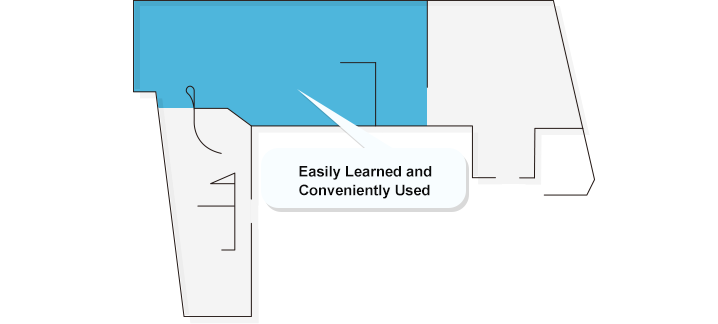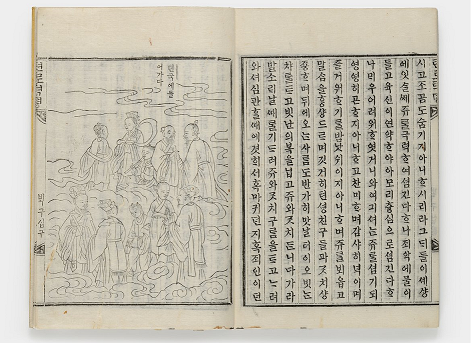Exhibitions
Easily Learned and Conveniently Used
Home > Exhibitions > Permanent Exhibition > Easily Learned and Conveniently Used

Hangeul was created as the Korean alphabet to deliver and express the Korean language, but most people were reluctant to adopt it at first due to the prevalence of Chinese characters. In order to aid the propagation of Hangeul, the Joseon court initiated projects to translate important Confucian and Buddhist books into Hangeul and distribute them. Furthermore, not only religious scriptures but also practical texts (such as medical and military strategy books) and materials for teaching foreign languages including Chinese were translated into Hangeul. As a result, the use of Hangeul gradually became widespread.

Yongbieocheonga

Worinseokbo
1) With Easy Hangeul
“Eonhae” refers to translating texts written in Chinese characters into Korean and writing the translation in Hangeul. In the early days of Hangeul, the court led efforts to translate Buddhist and Confucian scriptures. Since then, the scope of eonhae has continued to expand with an array of diverse books being translated. Through eonhae people were allowed to enjoy greater access to a wealth of information.

Beophwagyeong Eonhae

Dusi Eonhae

Myeonghwanggyegam Eonhae
2) Hangeul and Foreign Language Education
Hangeul proved to be especially useful for helping the Joseon people to learn Chinese characters and other foreign languages. Since its letters are phonemic, Hangeul provided an efficient method for the phonetic transliteration of Chinese characters, which were in wide use during the Joseon dynasty. In fact, Hangeul was used in various teaching materials not only for Chinese but also for all of the most important foreign languages of the time, including Mongolian, Manchu, and Japanese. Those teaching materials, published by Joseon’s official bureau of interpretation and translation of foreign languages, provided the pronunciation and meanings of foreign words and phrases in Hangeul.
3) Hangeul in the World of Religion
Hangeul has proven to be an effective tool for enhancing the spread of various religions, including Buddhism, Christianity, and Cheondogyo. Most of the religious works that were translated into Hangeul during the early stages of the Joseon period were Buddhist scriptures. Later on, the holy texts of Christianity and Cheondogyo were also translated into Hangeul. In particular, Hangeul Bibles became widely available to the Korean people with the introduction of Christianity in the twentieth century.

Bumoeunjunggyeong Eonhae

Taesanggameungpyeondoseol Eonhae

Woodblock for the pilgrim's progress
4) Enhancing the Spread of Practical Knowledge
Hangeul directly improved the lives of the common people by aiding the spread of practical knowledge. In particular, in the wake of Imjinwaeran—the Japanese invasions of Korea (1592 – 1598)—Hangeul translations of medical and military books were distributed to inform people how to treat diseases and handle weapons. Other publications in Hangeul offered important knowledge for day-to-day living on topics such as overcoming famine, agricultural techniques, pregnancy, childbirth, and homemaking. Not only this, such books have been published in Korean or translated into Korean then written in Hangeul as Muyejebo that deals with the use of weapons, Eumsigbangmun that records food recipes, and Haebuhak that is the Korea's first anatomical textbook published in Jejungwon.






















